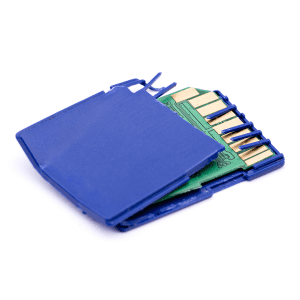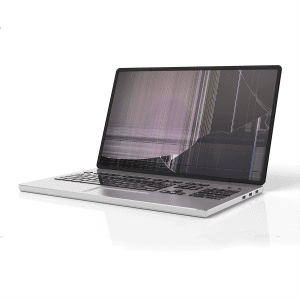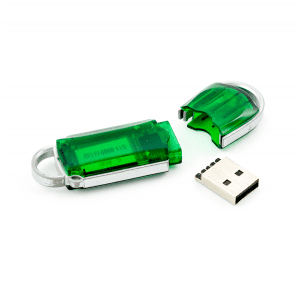How to Protect Your Digital Life: Data Recovery Tips and Tricks from Austin’s Top Specialists
Only a few people and businesses realize that all their data can be lost instantly. You don’t need a virus to wipe everything out or a trojan to lock up your computer. In fact, you can lose that data even if there is a power surge or the motherboard on your computer trips up and fries the hard drive.
In the age of SSDs, recovering data has become more complex and often more challenging than before. At Flashback Data, we work with dozens of home and business owners who have lost their data. Our goal is to recover everything. However, many people will try to recover the data independently before contacting us. That said, recovering lost data is much more complicated than what most people will have you believe, which is why “data recovery near me” is one of the most searched terms in our industry.
In this article, we’ll dive into a handful of things you can do to recover your data or at least prevent it from being lost beyond recovery. Forensic data recovery is painstakingly time-consuming, but if the hard drive or SSD is left untouched, there is a higher probability of our team in Austin recovering your data.
Tip 1: Invest in Reliable Cloud Backup
Implementing a robust cloud backup solution is one of the pillars of effective data recovery strategies. The inevitability of data loss, whether through accidental deletion, hardware failure, or malicious attacks like ransomware, makes it critical for businesses and individuals alike to approach data protection proactively. A reliable cloud backup software acts as your safety net, ensuring that no matter what happens to your local data, a secure and up-to-date copy is always available off-site.
Cloud backup services offer more than just storage; they provide peace of mind. Features like automatic backups, versioning, and encryption mean data is backed up and protected against unauthorized access. In the event of data loss, cloud backup simplifies the recovery process, allowing you to restore files to their original state with minimal effort and downtime.
Moreover, cloud backup is not constrained by physical limitations, offering scalability that grows with your data needs. This means you’re not just recovering lost files; you’re ensuring your digital footprint can withstand and recover from any disaster. Investing in a cloud backup solution is not an expense but a critical part of any comprehensive data loss prevention plan.
Tip 2: Don’t Panic and Formulate a Plan
The moment you realize your data is missing can be one of pure panic. However, remaining calm and following a structured approach to recovery is crucial. Panic can lead to rash decisions that may further jeopardize your chances of recovery. Instead, taking a measured, calm approach can significantly increase the likelihood of retrieving lost data.
The data recovery plan should include immediate steps to take once you discover the loss, such as isolating the affected device to prevent overwriting of data and assessing the nature and extent of the loss. A good plan also outlines the tools and methods for recovery, prioritizes data criticality, and specifies when to seek professional help.
Remember, quick and smart actions are essential to successful data recovery. This means being prepared with a list of do’s and don’ts, knowing who to call for help, and having access to the proper recovery tools. A well-thought-out recovery plan turns a potentially catastrophic data loss scenario into a manageable inconvenience, ensuring you can recover completely and quickly.
Tip 3: Limit Your System’s Usage
Upon realizing you’ve experienced data loss, minimizing the affected device’s use immediately is imperative. Continued use of the device can lead to new data being written over the lost files, significantly reducing the chances of successful recovery. This is especially true for complex and solid-state drives, where lost data remains recoverable until new data is overwritten.
Limiting system usage means avoiding activities that can write new data to the storage media. This includes installing new software, downloading files, or even browsing the internet, as these actions can create temporary files that may overwrite the lost data. If the data loss is on a smartphone or tablet, refrain from taking new photos, installing apps, or updating existing apps.
After discovering data loss, the first action should be to secure the device and assess the situation to determine the best course of action. If you need help with how to proceed, it’s advisable to turn off the device and consult with our data recovery professional, who can guide you on the next steps without risking further data loss.
Tip 4: Seek Professional Help Promptly
When faced with data loss, especially when the lost data is of high value or critical to business operations, seeking the expertise of a data recovery professional is a wise decision. As professionals, we have the tools, technology, and expertise to accurately diagnose the problem and recover data even in the most challenging situations, including mechanical failures, logical errors, and physical damage.
Attempting DIY recovery methods can be tempting, especially with a plethora of data recovery software available. However, these methods carry risks, mainly if the data loss is due to hardware issues. Downloading and running recovery software can overwrite the data you’re trying to recover.
We are experts in data recovery and will provide an assessment of the recovery chances and a detailed explanation of the recovery process. Plus, we handle a wide range of storage media, from hard drives and SSDs to memory cards, ensuring your data is safe.
Tip 5: Avoid New Installations or Downloads
After experiencing data loss, one of the most critical steps is to refrain from downloading or installing any new programs on your computer, especially data recovery software. While it may seem counterintuitive, downloading or installing new software can overwrite the sectors of your drive where your lost data may still reside, making recovery significantly more difficult or even impossible.
This tip extends to all files and applications, not just recovery software. The space your deleted files occupy is marked as available for use by other data. Therefore, any new data written to the disk, including software installations or updates, can occupy this space, permanently erasing the lost data.
If you find yourself in a situation where recovery software is necessary, opt for a version that runs from a USB drive or another external media. This approach allows you to attempt recovery without risking the overwriting of crucial data. Remember, preserving the integrity of your lost data should be your primary concern immediately following a data loss incident.
Tip 6: Utilize Verified and Safe Data Recovery Software
If you’re considering the DIY route for data recovery, selecting software that is effective, safe, and verified is crucial. The internet is awash with data recovery tools, but not all are created equal. Using unverified, potentially malicious software can exacerbate data loss problems, leading to permanent data deletion or even exposing your system to security risks.
When choosing data recovery software, look for options thoroughly tested and reviewed by reputable sources. These programs should have a proven track record of successful data recovery across various data loss scenarios. Additionally, ensure the software is compatible with your operating system and the file system of the storage media you’re attempting to recover from.
You should only choose software that performs read-only operations on your storage media to prevent further modification or damage to your lost data. The best recovery tools provide a preview feature, allowing you to see which files can be recovered before proceeding. This feature gives you peace of mind and ensures that the recovery process is transparent and controlled.
Final Word
If you suspect your hard drive is failing, it’s advisable to stop using the device and back up your data immediately. If the data is critical, consider calling us; our professionals will help safely transfer your data to a new storage device.








